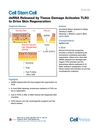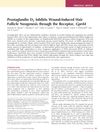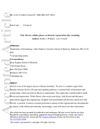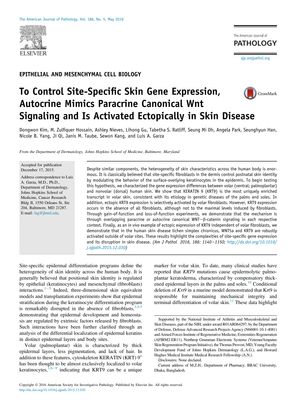TLDR The research suggests that a specific skin gene can be controlled by signals within and between cells and is wrongly activated in certain skin diseases.
The document details a study on the regulation of KRT9, a gene associated with the thick, hairless skin of the palms and soles (volar skin). The research found that KRT9 can be expressed in keratinocytes both independently and when co-cultured with volar fibroblasts, with higher expression levels in the presence of fibroblasts. The study demonstrated that canonical Wnt/β-catenin signaling is crucial for KRT9 expression, which can be activated through both autocrine and paracrine mechanisms. Additionally, the study observed ectopic expression of KRT9 in skin diseases like lichen simplex chronicus, suggesting a disruption of site-specific gene expression. The findings propose a new understanding of skin gene expression regulation and potential therapeutic applications for skin identity reprogramming. The number of human subjects or samples used in the study was not provided, except for a mention of three subjects in one cohort, limiting the ability to assess the study's strength based on sample size.
 128 citations
,
August 2015 in “Cell Stem Cell”
128 citations
,
August 2015 in “Cell Stem Cell” Damage to skin releases dsRNA, which activates TLR3 and helps in skin and hair follicle regeneration.
1235 citations
,
December 2013 in “Nature” Two fibroblast types shape skin structure and repair differently.
 68 citations
,
November 2012 in “Journal of Investigative Dermatology”
68 citations
,
November 2012 in “Journal of Investigative Dermatology” Prostaglandin D2 blocks new hair growth after skin injury through the Gpr44 receptor.
 235 citations
,
January 2011 in “Journal of Clinical Investigation”
235 citations
,
January 2011 in “Journal of Clinical Investigation” Men with baldness due to androgenetic alopecia still have hair stem cells, but lack specific cells needed for hair growth.
 829 citations
,
May 2007 in “Nature”
829 citations
,
May 2007 in “Nature” Hair follicles can regrow in wounded adult mouse skin using a process like embryo development.
 96 citations
,
April 2007 in “Journal of Investigative Dermatology”
96 citations
,
April 2007 in “Journal of Investigative Dermatology” Grafted rodent and human cells can regenerate hair follicles, but efficiency decreases with age.
92 citations
,
April 1999 in “The journal of investigative dermatology/Journal of investigative dermatology” Nonpalmoplantar skin cells can be made to express keratin 9 by interacting with palmoplantar fibroblasts.
12 citations
,
October 2023 in “International Journal of Molecular Sciences” Understanding how skin cells react to pressure can help diagnose and manage pressure-related skin disorders.
 7 citations
,
November 2020 in “Experimental Dermatology”
7 citations
,
November 2020 in “Experimental Dermatology” Different cell types work together to repair skin, and targeting them may improve healing and reduce scarring.
 April 2016 in “Journal of Investigative Dermatology”
April 2016 in “Journal of Investigative Dermatology” Double-stranded RNA activates a pathway that causes a skin protein to be expressed in the wrong place.
 April 2016 in “Journal of Investigative Dermatology”
April 2016 in “Journal of Investigative Dermatology” Blocking Oncostatin M's role in the JAK-STAT pathway can stimulate hair growth in mice.
 April 2016 in “Journal of Investigative Dermatology”
April 2016 in “Journal of Investigative Dermatology” Blocking Prostaglandin D₂ (PGD₂) could help treat hair loss.









